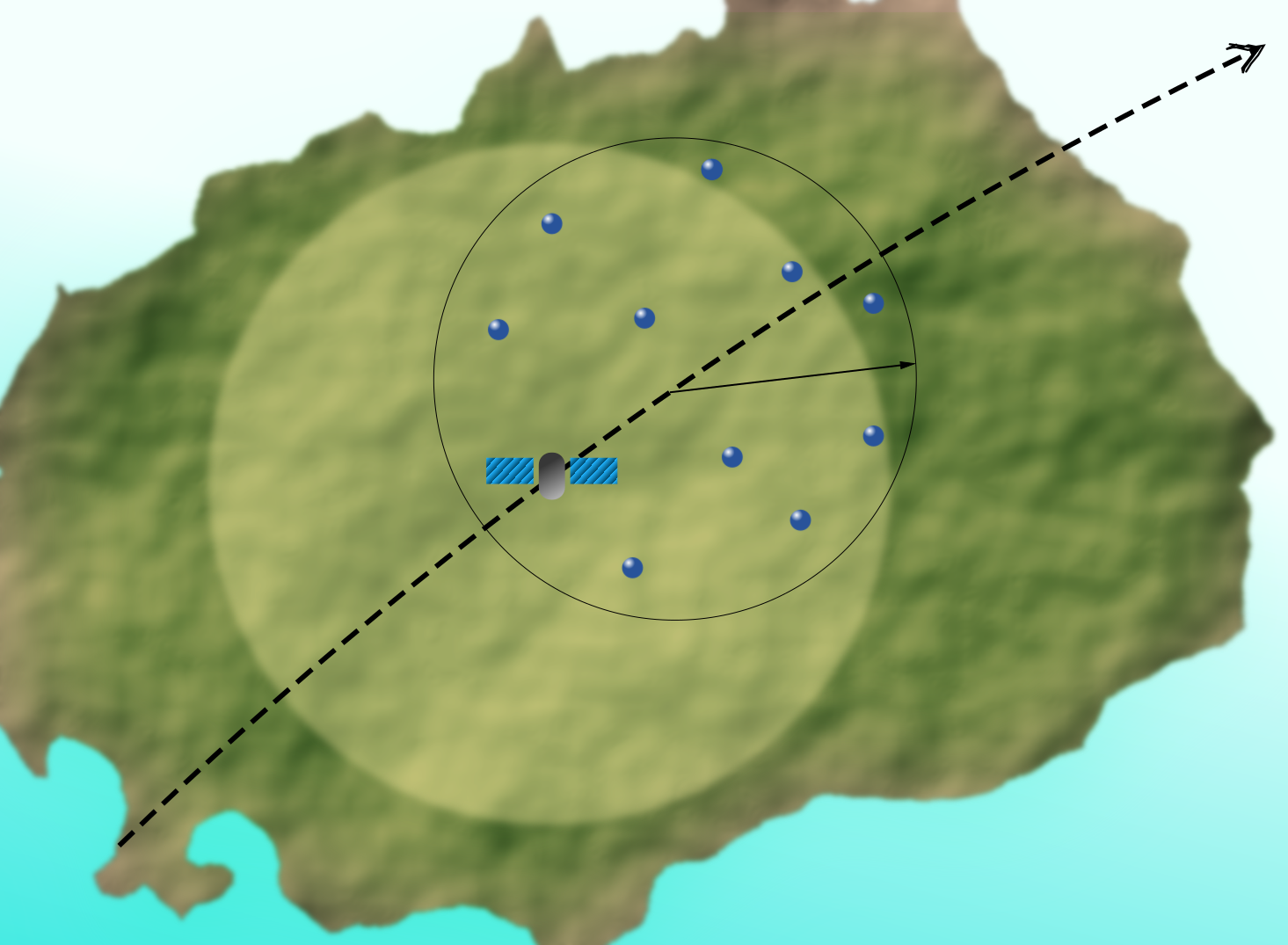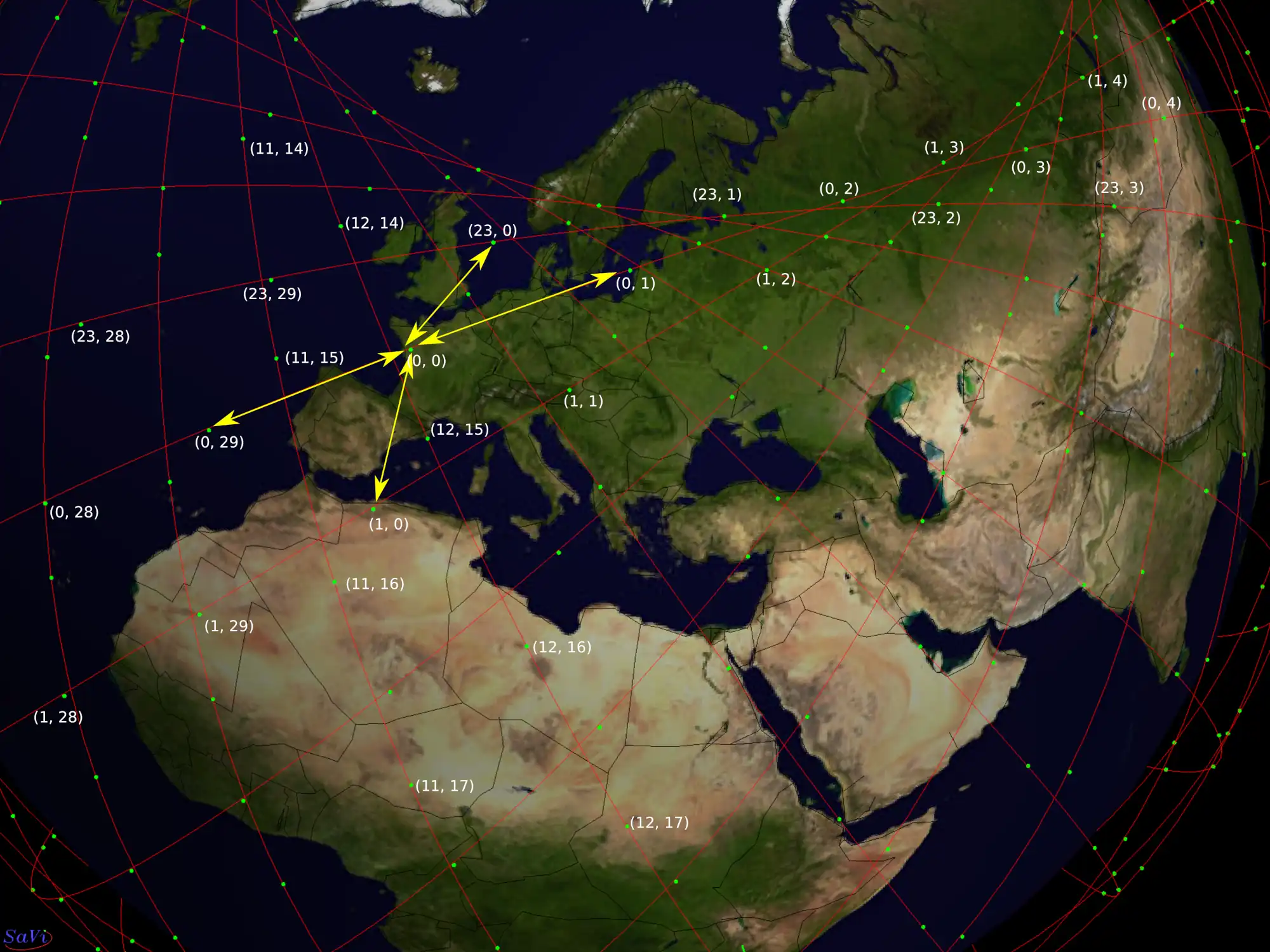ICARUS
Information-Centric sAtellite-netwoRk for vehicUlar communicationS
During the last decade, access to space has become more affordable. Launch prices have fallen below ten thousand dollars per kilogram of useful load for Low Earth Orbit (LEO) satellites, a reduction that is expected to continue for the foreseeable future. This price reduction has created the proper opportunities for private entities to launch a new generation of satellite constellations and provide advanced wideband communications services.
These new satellite communication (SatCom) networks can play a significant role in fleet management applications (cars, trucks, trains, vessels, farm equipment…), aeronautical/maritime tracking systems, and in disaster management scenarios, since they can ensure connectivity in remote areas where a terrestrial infrastructure is difficult or impossible to deploy or even transport, or, in any case, they can provide a complementary role to 5G terrestrial networks. For this kind of application, the use of High Altitude Platforms (HAPs) or Low/Medium Earth Orbit (LEO/MEO) constellations is recommended since they can deliver a high throughput service with low latency.
SatComs can therefore extend and complement terrestrial networks in unserved or under-served geographic areas. In fact, standardization actors, such as 3GPP, have begun to design solutions to use these new communication paths. In the case of cellular networks, the novel Work Item on Non-Terrestrial Networks aims to introduce a satellite component in the 3GPP 5G standard (New Radio, as per 3GPP nomenclature). However, typical satellite channel impairments, as large path losses, variable delay, and Doppler shifts, pose severe challenges to the realization of a satellite-based 5G network.
The core goal of the ICARUS project is to enable solutions for high bandwidth SatComs in under-served areas for fleets of vehicles. The design of a comprehensive solution in this context requires close cooperation between multiple knowledge areas, going from the physical substrate to the more abstract technologies dealing with application logic. Thus, the proposed system could leverage the high capacity of the Ka frequency band in the radio link, employ advanced medium access control (MAC) protocols with improved efficiency, exploit the existence of inter-satellite-links (ISL), and take advantage of the resiliency and native multicast capabilities of the information centric networking (ICN) paradigm. In particular, the project will address the following technical challenges:
-
The use of higher frequencies in the millimeter bands, mmW, more specifically, Ka- and, eventually, Q/V or W-band, poses new challenges. Furthermore, given the lack of measurements from non-GSO (non-Geostationary orbits), existing channel models are not totally suitable for the new satellite networks made up of several non-GSO satellites. Even though there have been a number of experiments, the most recent one ESA’s Alphasat, where tropospheric effects have been assessed at mmW, there is a lack of solid knowledge of the effects on non-GEO configurations, especially LEO, given the very short passage times over the measurement earth station. Problems arise from the varying path length to be expected from rise to setting of the satellite on the local horizon, the presence of faster scintillations in clear air conditions and different dynamics of rain attenuation due to the fast passage of the satellites. This also includes the spatial structure of rain cells for hand-over, thus avoiding deep fade events. All these and other effects, to be mentioned later in this proposal, have an impact on the link budget (reduction and fast variations of available margins) as well as in the application of Fade Countermeasures (FCM) such as Adaptive Coding and Modulation (ACM). New experimental channel data and models are thus required for the initial phases of system conception. This also includes the development of time-series simulators for dynamic system assessment through software and hardware emulators.
-
Develop new MAC protocols for data transmission from the user terminals to the satellite constellation. In this direction of the communication, the satellite channel will be shared by a large number of terminals extended over a wide area trying to send small amounts of data occasionally, but the number of nodes and their geographic distribution is unknown and continually changing. To complicate the scenario even further, the relatively high delays in the satellite channels and the increased Doppler effects, especially with LEO/MEO constellations, impose an extra challenge from the MAC sublayer viewpoint. All these factors make the design of a MAC protocol for upstream transmission both critical and challenging. In this project we will search for advanced MAC protocols that can adapt to a variable number of mobile devices in a scenario with high power imbalance conditions, uneven long delays and poor-quality channel estimations.
-
Design mechanisms for the efficient transmission of legacy IP traffic over an ICN backend. Even though the ICN networking paradigm provides clear advantages over the current IP networking stack, it cannot be expected that it will replace the current IP-based technologies overnight. So, any new networking technology must be capable of carrying current network traffic with negligible degradation. This part of the project will define translations mechanisms to map IP traffic to ICN concepts. It is a secondary goal for these translation mechanisms to be able to take advantage of the mobility, multi-path and multicast capacities of the ICN substrate so that even legacy traffic can receive a better service than what would otherwise be possible with a standard IP stack.
-
Develop new routing protocols for multi-hop traffic transmission in the satellite network. Data transmission inside a swarm of satellites, each acting as an individual router, and with constant neighboring changes due to their inherent mobility, cannot rely on the same solutions as a classical static network. In a Satcom network, however, the mobility patterns are predictable and thus the solutions have to be different from those of other mobility scenarios, such as mobile wireless sensor networks, if we are to obtain the best possible performance. The usage of an ICN network further complicates the issue. In an ICN network, information must follow the reverse path of interest queries or this traffic will not be able to reach the original requesting clients. Due to the highly dynamic topology, it is possible that the satellite servicing a given client when a request was made gets replaced by a different satellite when the requested information is due to arrive. In this project we will propose modifications to the routing mechanisms of ICN networks to overcome this issue.
-
Create a simulation testbed of the whole system. As it is not possible to launch a satellite constellation in order to test all the project contributions, we will augment an existing discrete network simulator, such as with mobility models to simulate the position of the individual satellites, an accurate model of the Ka-band both in the inter-satellite and in the satellite-ground directions and updated routing software for the ICN routers. We will employ the testbed to obtain performance measures of the transmission of legacy IP traffic over the SatCom using as traffic sources/destinations individual nodes of a transport fleet.
Recent Advances in Information-Centric Networks (ICNs)
December 01, 2023

Improving Uplink Scalability of LoRa-Based Direct-to-Satellite IoT Networks
November 17, 2023
End-to-end Active Queue Management with Named-Data Networking
October 17, 2023
Irregular repetition slotted Aloha with multiuser detection: A density evolution analysis
July 13, 2023
Evaluation of 5G and Fixed-Satellite Service Earth Station (FSS-ES) Downlink Interference Based on Artificial Neural Network Learning Models (ANN-LMS)
July 05, 2023
Deep Learning Forecasting and Statistical Modeling for Q/V-Band LEO Satellite Channels
June 15, 2023
Study of Coded ALOHA with Multi-User Detection under Heavy-Tailed and Correlated Arrivals
March 30, 2023

Cache Placement in an NDN Based LEO Satellite Network Constellation
December 05, 2022
